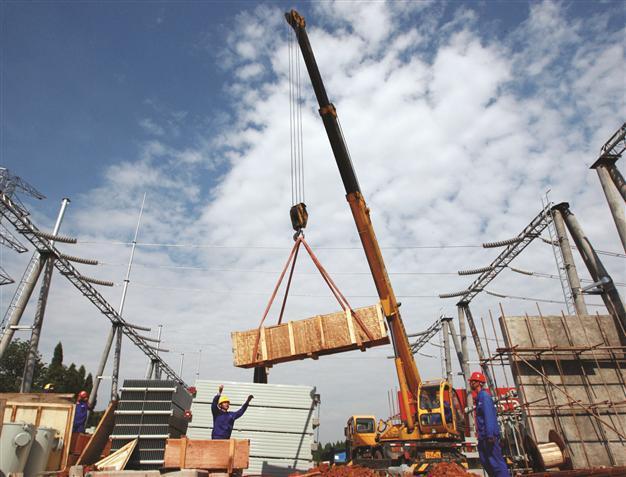Developing Asia will slow in growth: ADB
BANGKOK - The Associated Press

Workers build a substation in Suining, in China’s Sichuan province. Asia must transform its economic and social models if it is to keep driving future global growth. AFP photo
After years of rapid growth, Asia’s developing economies now face much more modest prospects and must refashion themselves to reduce dependence on exports, the Asian Development Bank said yesterday in a report that slashes growth forecasts for this year and next.
The ADB said growth in developing Asia, which includes giant emerging economies such as India, China and Indonesia, will slow to 6.1 percent this year from 7.2 percent last year and only partly rebound to 6.7 percent in 2013. It had previously forecast growth of 6.9 percent for 2012 and 7.3 percent for 2013. The forecasts don’t include Japan, an advanced economy.
The Manila-based development lender said China, India and other developing countries in Asia must find ways to rev up their service sectors now that slowdowns in the U.S. and Europe have slashed Western appetite for Asian exports.
“These measures are critical if the region is to continue lifting its people out of poverty,” said ADB chief economist Changyong Rhee.
Within the region, China is expected to grow 7.7 percent this year and 8.1 percent in 2013, a sharp drop from 9.3 percent in 2011. India’s growth will slow to 5.6 percent in 2012, down from 6.5 percent in 2011.
Service sectors in the region are already large - making up nearly half of the region’s gross domestic product in 2010 - but they need to modernize to spur investment and the development of new products, as well as diversify away from exports, according to the ADB.
China and India lag far behind advanced economies in labor productivity, with service sectors focused on traditional industries such as wholesale and retail trade and transportation.
High-end services, such as information and communications technology, account for less than 10 percent of Asia’s service economy, far below the 20 percent to 25 percent in advanced economies, the report said.
Additionally, regulatory barriers and restrictions hinder innovation and competition in many service sectors.
“In India, for instance, a staggering 13 official bodies regulate higher education,” the report said. “International experience shows that regulatory reform can catalyze competition and deliver significant economic benefits. It must be a top priority for policy makers.”
The region must also undertake education reform to train a new generation of professionals, including business managers, engineers, lawyers, doctors, scientists and software specialists.
